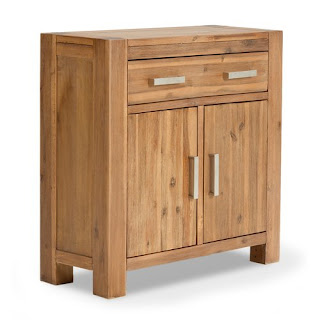Saturday, February 1, 2025
Sideboard Woodworking Plans for Modern Storage Solutions
Sideboard Woodworking Plans for Modern Storage Solutions
The sideboard, a timeless piece of furniture, transcends mere storage functionality. It serves as a focal point, a statement piece that reflects both personal style and the inherent artistry of woodworking. This comprehensive guide delves into the design and construction of modern sideboards, providing detailed plans and considerations for crafting a bespoke piece that perfectly complements contemporary interiors. We will explore diverse design options, material selections, and construction techniques to enable even intermediate woodworkers to create a stunning and functional sideboard.
Design Considerations for Modern Sideboards
Before embarking on the construction, meticulous planning is crucial. A well-defined design process ensures the final product meets both aesthetic and practical requirements. Several key aspects must be addressed:
Style and Aesthetics
Modern sideboards are characterized by clean lines, minimalist aesthetics, and a focus on functionality. Popular styles include mid-century modern with tapered legs and simple geometric forms; Scandinavian designs featuring light-colored wood and understated elegance; and minimalist designs prioritizing clean lines and lack of ornamentation. Consider the overall aesthetic of your living space to select a style that complements the existing decor. Consider incorporating elements such as recessed handles, floating shelves, or contrasting materials to add visual interest.
Dimensions and Functionality
The dimensions of your sideboard should be carefully planned based on the available space and intended use. Consider the following factors:
- Height: Standard sideboard heights range from 30 to 36 inches, but this can be adjusted to suit your needs.
- Width: The width should be proportionate to the available wall space and the amount of storage required.
- Depth: A depth of approximately 18 to 24 inches is typical, allowing for sufficient storage while maintaining a sleek profile.
- Storage Capacity: Determine the number and size of drawers and shelves needed to accommodate your storage needs. Consider incorporating different sized compartments for varying items.
Material Selection
The choice of wood significantly impacts the final look and feel of the sideboard. Hardwoods such as walnut, cherry, oak, and maple are popular choices due to their durability, rich color, and ability to accept finishes well. Softwoods like pine can also be used, but they may require more care and maintenance. Consider the wood's color, grain pattern, and overall aesthetic to match your desired style. The use of plywood for the carcass can significantly improve structural integrity and reduce the cost of materials. Consider combining different wood species for contrasting visual effects.
Detailed Construction Plans
The following steps outline a general approach to constructing a modern sideboard. Specific dimensions and details will need to be adjusted based on your chosen design.
Cutting and Preparation
Begin by creating detailed drawings with precise dimensions for each component: side panels, top and bottom panels, shelves, drawer fronts, and back panel. Use a high-quality table saw, miter saw, or circular saw to accurately cut the wood to these dimensions. Sand all cut pieces thoroughly to a smooth finish using progressively finer grit sandpaper. Ensure the surfaces are clean and free of dust before proceeding.
Assembly of the Carcass
The sideboard carcass is typically constructed using pocket hole joinery, dowel joinery, or mortise and tenon joinery. Pocket hole joinery is a relatively simple and effective method for joining the side panels, top, and bottom. Apply wood glue to all joint surfaces and clamp firmly until the glue is dry. Pre-drill pilot holes to prevent splitting when driving screws. Ensure the carcass is square and true using a square and level.
Installation of Shelves and Drawers
Once the carcass is assembled, install shelves using shelf supports or dadoes. Dadoes provide a more robust and aesthetically pleasing solution, but require more advanced woodworking skills. For drawers, construct the drawer boxes using dovetail joinery, rabbet and dado joinery, or simple butt joints reinforced with screws and glue. Install drawer slides, ensuring smooth and effortless operation. Attach drawer fronts, carefully aligning them with the drawer boxes.
Finishing Touches
Once the carcass, shelves, and drawers are in place, sand all surfaces again to ensure a perfectly smooth finish. Apply a suitable finish, such as varnish, lacquer, or oil, to protect the wood and enhance its natural beauty. Multiple coats may be necessary, sanding lightly between coats to achieve a flawless finish. Install handles, knobs, or other hardware, ensuring they are securely attached and aesthetically pleasing.
Adding Refinements
To further elevate the design, consider incorporating additional details such as:
- Floating Shelves: Create a visually appealing floating shelf above the sideboard for displaying decorative items.
- Recessed Handles: Integrate recessed handles for a sleek, minimalist look.
- Integrated Lighting: Install LED strip lighting underneath the sideboard to create a dramatic effect and highlight the piece.
- Customizable Interior: Design adjustable shelving or dividers within the sideboard to accommodate varying storage needs.
Safety Precautions
Woodworking involves the use of power tools and sharp instruments; therefore, safety precautions are paramount. Always wear appropriate safety gear, including eye protection, hearing protection, and a dust mask. Ensure that all tools are properly maintained and used according to the manufacturer's instructions. Work in a well-ventilated area to avoid inhaling wood dust.
Conclusion
Crafting a custom sideboard is a rewarding experience that allows you to create a unique and functional piece of furniture that perfectly complements your home. By carefully considering design elements, selecting appropriate materials, and following detailed construction plans, you can build a stunning modern sideboard that will be admired for years to come. Remember that patience and attention to detail are key to achieving professional-quality results. Embrace the process, learn from each step, and enjoy the satisfaction of creating something beautiful and enduring with your own hands.


0 comments:
Post a Comment